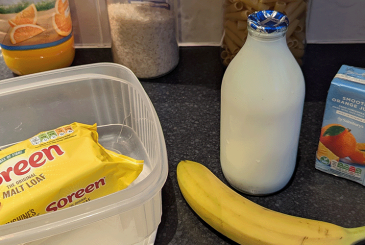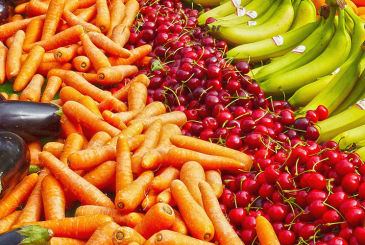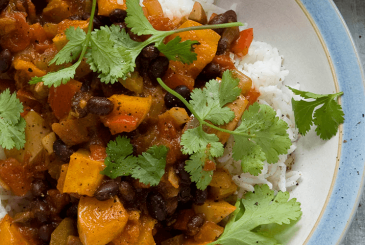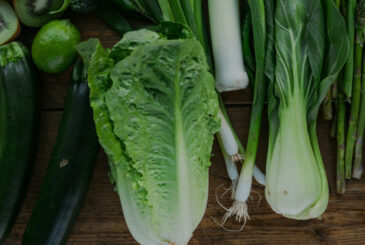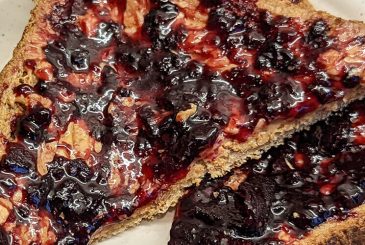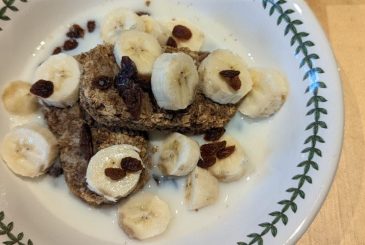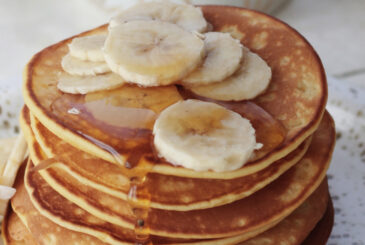Ultra-processed food (UPF) dominates our food environment. It makes up a staggering 60%1 of the average UK adult’s diet, and even more for children and adolescents. UPF is highly palatable, cheap, convenient and sometimes marketed as nutritious. However, it is increasingly being recognised by researchers, nutritionists, and public health bodies as being a possible contributor to poor health outcomes. Studies have shown that, even when nutrient levels are matched and controlled for, diets which are high in UPF are linked with increased risks of negative health outcomes including obesity, Type 2 diabetes, cancer and even mental health challenges.
But does UPF consumption impact rowers’ performance? And would cutting out UPF make a difference if you are already healthy and preforming at an elite level? To find out more, Olympic medallist Heidi Long cut UPF out of her diet for a month while training for the Boat Race at Oxford University.
What is UPF?
UPF is often confused with ‘processed food’, but the two are very different. Humans have been processing food – through chopping, cooking and salting – for thousands of years. However, in the last 50 years, the addition of industrial processing has changed the nature of the original ingredients, leaving the whole food unrecognisable. This form of ultra-processing usually includes adding chemicals to improve the shelf life and make products taste better.
There is a detailed scientific definition of UPF, but it can be more easily recognised by looking on the back of the packet. If a product contains at least one ingredient you wouldn’t find in your kitchen, such as, emulsifiers, colouring or artificial sweeteners, it’s likely UPF.
The term ’ultra-processed food’ comes from the NOVA classification. This system, developed by Brazilian researchers in 2009, categorises food into four groups based on their processing rather than nutritional content:
| Group 1 | Group 2 | Group 3 | Group 4 |
| Whole / minimally processed food | Processed culinary ingredients | Processed food | Ultra-processed food |
| Vegetables, fruits, legumes, grains, nuts, chicken, eggs, beef, milk | Salt, sugar, vegetable oils, butter | Cheese, canned vegetables, tinned fish, salted nuts, minimally processed bread | Sausages, highly processed bread, sweets, energy drinks, ready-meals, protein bars |
The nutrient content and amount of processing can vary greatly across UPF.
A month with no UPF
With the potential harm that consuming UPF could be causing to my health, I decided to investigate if it would be possible to train and study without eating UPF. Secondly, I wanted to see if there were any noticeable changes to the way I felt when cutting out UPF for a month.
Planning and preparation
I knew from the outset that eliminating UPF would take time and planning. The week before I started, I mapped out a variety of meals, snacks and ingredients that could be prepared in advance. I batch cooked staples like curries, soups and banana bread, and stocked up on whole ingredients.
The first big surprise was how much time it took to shop. I scanned the ingredients on everything to double check if it contained any ingredients I wouldn’t normally find at home. It took three different packets of cheese before I found one without any additives. Products that I assumed were simple, like sliced bread and tomato sauce, often contained a surplus of ingredients.
Creating new habits
Throughout the month it gradually got easier to avoid UPF. I learned which products and brands were not ultra-processed, got into the rhythm of preparing foods and snacks like bread, hummus and protein balls, and found meals that worked well around my training schedule. By the end of the month, the extra time spent preparing food felt less laborious and part of the routine.
I didn’t notice any dramatic changes in my energy during training sessions. The biggest change I noticed was in my sleep. I felt like I was sleeping deeper and would wake up feeling more rested. I use a wearable device to track sleep and monitor aspects of my health, and the data showed an improvement in my sleep efficiency. Of course, I don’t know whether these changes were a direct effect of removing UPF or a placebo, but it was a positive change and one I was excited about as sleep is so important for recovery.
Eating with others
One of the more unexpected challenges was when it came to sharing meals with friends and family. It is easy to control home cooking but going out for a meal was more difficult as you could never be sure what was used in a dish. It gave me a deeper appreciated for how engrained UPF is in everyday food culture and how difficult it would be to avoid it long-term.
A one-day menu with no UPF as an elite athlete
First breakfast: Homemade wholemeal bread with peanut butter and honey; coffee with dairy milk
Mid-session snack: Banana
Second breakfast: Overnight oats with chia, flax, sunflower and pumpkin seeds, sultanas, blueberries and dairy milk
Lunch: Pasta salad with chicken, mozzarella and vegetables
Pre-row snack: Banana and homemade protein ball (dates, oats, peanut butter, nuts, cinnamon)
Post-row snack: Greek yogurt and honey
Dinner: Dahl made with lentils, tomatoes, coconut milk, onions, garlic, ginger and spices
Dessert: Greek yogurt, cherries and cacao nibs.
Will I eat UPF again?
I will… but with more awareness. UPF sports nutrition products, like energy gels and protein shakes, can help support my performance, while sharing meals with friends and family is important to me. In addition, there are times when the convenience of a meal with UPF can make a very busy day that much easier. But I have learned how to make better food choices and be more mindful about what I am eating.
Fundamentally, more research is needed to understand how UPF effects our health as well as how it can impact sports performance.
Taking the time to understand what is in our food and how it makes us feel is the most important step to take.
Please note this wasn’t a formal research study. The experiences shared here are based on personal observation and should be taken as anecdotal.
1: Source: https://sphr.nihr.ac.uk/news-and-events/blog/beyond-taste-and-nutrient-content-ultra-processed-foods-and-their-impact-on-adolescent-health-in-the-uk/ Downloaded 24 March 2025.



